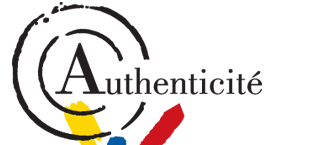 Valuation of a neay pair of wrought iron consoles in our next auction
Valuation of a neay pair of wrought iron consoles in our next auctionLe Floc'h auction house in Saint-Cloud, in collaboration with our experts specialized in free valuation and free appraisal will auction a near pair of French 20th century wrought iron consoles, Sunday 24th of November in Saint-Cloud.










Our teams in London and Paris are available to meet your needs whether you want to buy, sell or know the value of your works of art.
News releases

Increasingly rare, the restoration of gilded wood requires great patience and respect for traditional techniques. Authenticite offers you to rediscover these techniques where the use of the aerosol is strictly banned!
The work of gold is a noble art in which two businesses are involved: the beater of gold and the artisan gilder. The work of the beater of gold is to create different alloys, to reproduce the variety of colors of gold. It makes bullion that passes through a rolling mill where the gold leaf will emerge. There are only fifty gold-beaters in the world including one in France!
The craftsman gilder meanwhile applies gold leaf according to two techniques known respectively as "the gold to mixing 'and' gold in tempera."
Appeared in the mid-eighteenth century, gilding to mixing is used on all types of materials and works, including those for outside. We start by applying a product that will dry for 3 to 12 hours. It is only when the product completely dry that the craftsman can apply the gold leaf.
The peculiarity of this technique is the final appearance of the gilding, uniform and can not be burnished, i.e. that it can shine. In the nineteenth century, this technique will be used in addition to the technique called "tempera".
The gilding in tempera is a technique used on objects that can be prior to the eighteenth century. Gilding in tempera gives the material a shiny which is particularly desired. This is a very thorough and very long process: twenty successive operations are necessary. This technique is preferred to reveal the finesse of a decoration or to emphasize certain ornaments, through the work of the burnishing agate stone that occurs late in the process.
Step by step

1 - First we start by recapping chips and restore the casts using "big white" preparation made from natural rabbit skin glue and whiting. After drying, softens white with sandpaper so that no trace remains after gold leaf applied.
2 - The next step is to coat the areas to be restored with yellow glue (rabbit skin glue tinted with yellow ocher pigment). This preparation is used as a mordant to plate (medium of the leaf) and trompe l'oeil in the funds that the gold leaf can not reach.

3 - Then we apply the base which is clay mixed with rabbit skin glue. This earth has multiple color options, but is more often used in red also called Armenian bole. We "layer" base on the yellow glue on three occasions. The base can brown gold.

4 - We finally arrived at the stage of the gilding. The gold leaves are arranged on a "brown cushion". Then the leaves are cut to size with a knife to brown. It wets the support for receiving the gold leaf, it is taken with the palette to brown lightly greased, and we then have the sheet accurately. We come then dab gently with the seconder, and allowed to dry the gilding.

5 - Then comes the stage of browning, the agate rub against gold leaf on the parties to brown and gives beautiful shine and development of the gilding.
Then, we fix and matt the gold with glue diluted rabbit skin that is applied to the burnished parts, the matting.

6 - Last step: we will skate for gold. For this it is possible to use abrasives, glue colored juice with pigments or colors in alcohol. This gives an aged look to gold. The restoration is thus completed.
Objects are "links", they are our memory with the past, and it is a duty to restore them.
Margaux GATIMEL
Artisan doreur
About the author : www.feuilledantan.fr
Feel free to contact our fine art specialists if you want to appraise your works of art. We also assist you in the selling of your works of art : consultancy.


 +33 6 95 34 93 78
+33 6 95 34 93 78

